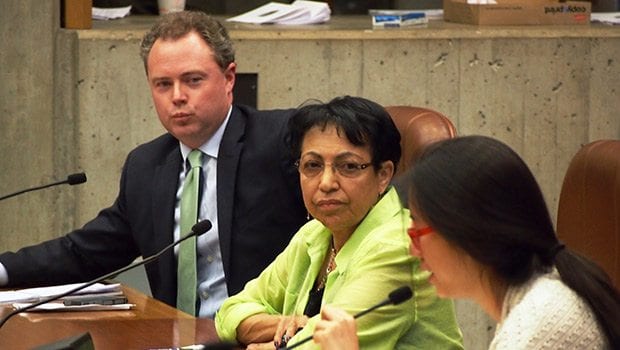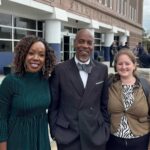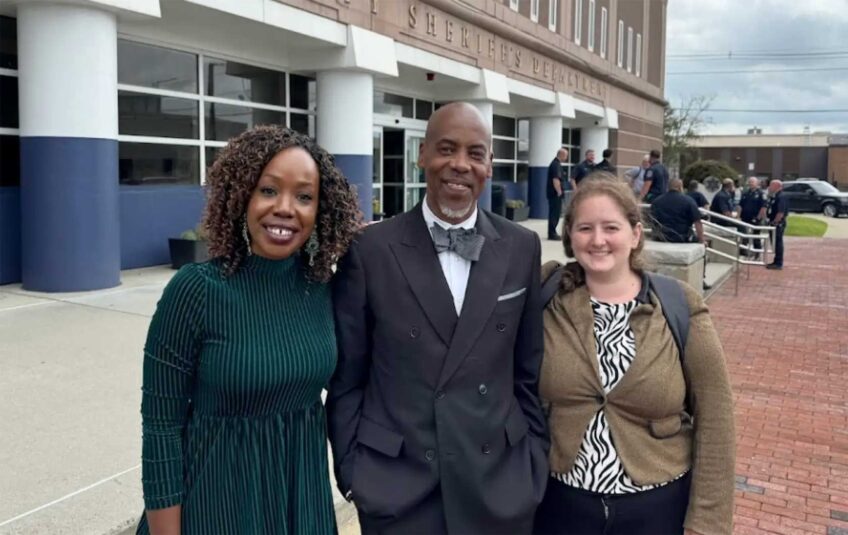

City councilors Tito Jackson, Charles Yancey, Sal LaMattina and Ayanna Pressley were among those who spoke during a hearing on the 40th anniversary of school desegregation in Boston.
For many whites in Boston June 21, 1974 marks the beginning of forced busing, the day Judge Arthur Garrity issued the ruling that put the majority of the city’s school children on yellow school buses.
For many black Bostonians, the date denotes court-ordered desegregation, a key development in a centuries-long fight for equal access to education and public resources.
“Busing is not the issue,” said Cambridge College professor Lyda Peters, speaking during a City Council hearing on desegregation in Iannella Chamber last week. “Busing is a means of transportation.”
The different phrases blacks and whites use to describe desegregation underscores vast differences of opinion about the tumultuous chapter in the city’s history – differences that still flare up in the public sphere.
In April, when city Councilor Charles Yancey filed a motion in council to commemorate the 1954 Brown v. Board of Education decision, East Boston Councilor Sal LaMattina, South Boston Councilor Bill Linehan and at-large Councilor Steve Murphy refused to sign on. In remarks to the Boston Globe, Murphy cited the connection between the landmark civil rights decision and busing in Boston.
Yet last week, LaMattina was there in the Iannella Chamber, reflecting on his own experiences of the desegregation era in a rare dialogue about race with his colleagues.
“As a white politician, I was always told we don’t talk about busing,” LaMattina said. “We are a better city than we were 40 years ago.”
The City Council hearing was organized by the Boston Busing Desegregation Project, an initiative of the Union of Minority Neighborhoods aimed at encouraging conversation about the city’s tumultuous history of desegregation in the 1970s.
The hearing was not particularly contentious, but only the three black councilors — Ayanna Pressley, Tito Jackson and Charles Yancey — and LaMattina commented. Councilor Matt O’Malley attended a portion of the meeting. Murphy sent an aide.
Donna Bivens, project director of the Boston Busing Desegregation Project for the last four years, said whites have had difficulty understanding how blacks see desegregation.
“A lot of whites don’t want to talk about racism,” she said. “You can’t talk about education in Boston without talking about racism.”
As Peters noted in her testimony, blacks in Boston had sought equal access to schools in the city as early as the 18th century. In the 1850 court case, Roberts v Boston, Benjamin Roberts fought the city for the right to send his daughter to an all-white school that was closer to his home than the underfunded, all-black Abiel Smith School where she was enrolled.
Although the state Legislature outlawed segregation in 1855 in reaction to the Roberts case, Boston’s school system became re-segregated when segregation increased in the city’s neighborhoods. At the same time, blacks were effectively locked out of jobs as teachers, custodians and administrators in the school system.
Jobs and educational resources were tightly controlled by a school committee that openly defied the state’s anti- segregation laws. By 1974, black classrooms were overcrowded with many schools holding classes in basement rooms.
Peters, who was a teacher in the years before busing, said the experience blacks had in schools before desegregation was as traumatic as busing was for whites, recalling finding a 5-year-old girl after school one day. Her teacher, who was white, had shut her in a closet, taped her mouth shut and apparently forgot her there.
“I had books from 1942 and I was teaching in 1965,” Peters said. “I was a new teacher with 45 kids in my classroom.”
Back in East Boston, as was the case in much of the city, there wasn’t much talk of deplorable conditions in the Roxbury and South End schools attended by blacks, according to LaMattina.
“I never knew there were problems in other schools.”
LaMattina said the implementation of court-ordered desegregation increased racial hatred and recalled that the home of his best friend – who was black – was firebombed.
“I never saw that growing up in East Boston,” he said.
“Hate existed all over the city,” Peters responded.
Also commenting on the lead-up to Garrity’s decision, Dorchester Reporter managing editor Bill Forry said the Boston School Committee and the electorate in the city should shoulder the blame for busing.
“The electorate has to bear responsibility for electing leaders who knowingly and willfully defied the law,” he said.
Lorrayne Shen, an organizer with the Chinese Progressive Association, spoke about how Asian students were used as a buffer between blacks and whites during desegregation.
“Asian students were classified as ‘other,’” she said. “They were placed in white schools. Because they were placed in the schools, [the schools] were classified as desegregated.”
Christine Boseman, a black woman, testified that she dropped out of school because of racial harassment during desegregation.
“It was awful,” said Boseman, who only recently got her GED and graduated from UMass Boston.
The hearing at City Hall was the latest in a series of hearings convened by the Boston Busing Desegregation Project. The project, which kicked off in 2010, is aimed at encouraging dialogue about the events the lead up to desegregation and its aftermath, according to Horace Small, executive director of the Union of Minority Neighborhoods.
“We had to win the confidence of people over the last four years to get us to a place where they could share their stories,” he said during the hearing. “History makes us uncomfortable.”
Councilor Pressley said the conversation about busing is an important step toward healing the traumas people suffered during desegregation.
“We are in an emotional limbo, in post-traumatic stress,” she said. “It is a dark stain and it gets in the way of our ability to be healthy, fully functioning communities. This is historic and important and it shouldn’t have taken 40 years to have this conversation.”
Bivens said the project will likely convene another forum in September, to mark the 40th anniversary of the day the yellow school buses first brought black high schoolers into white neighborhoods and whites into black neighborhoods.







